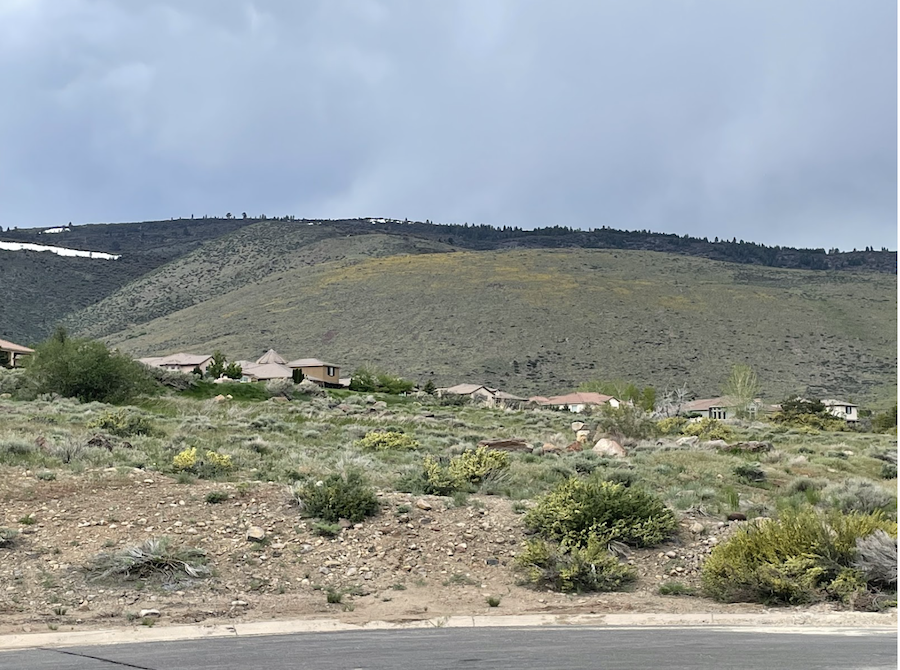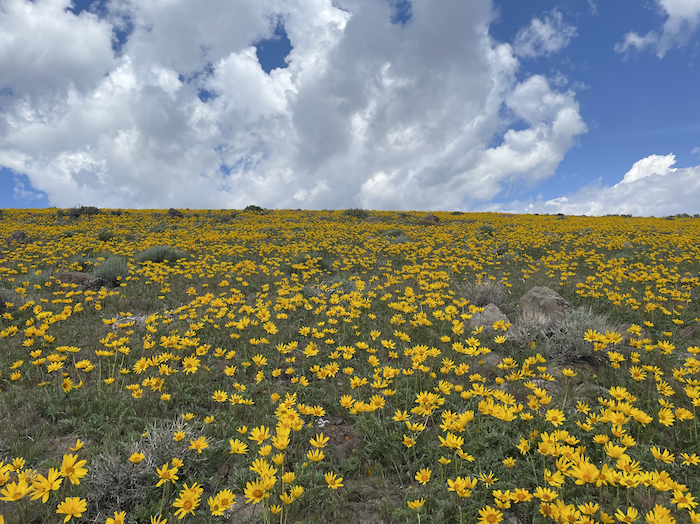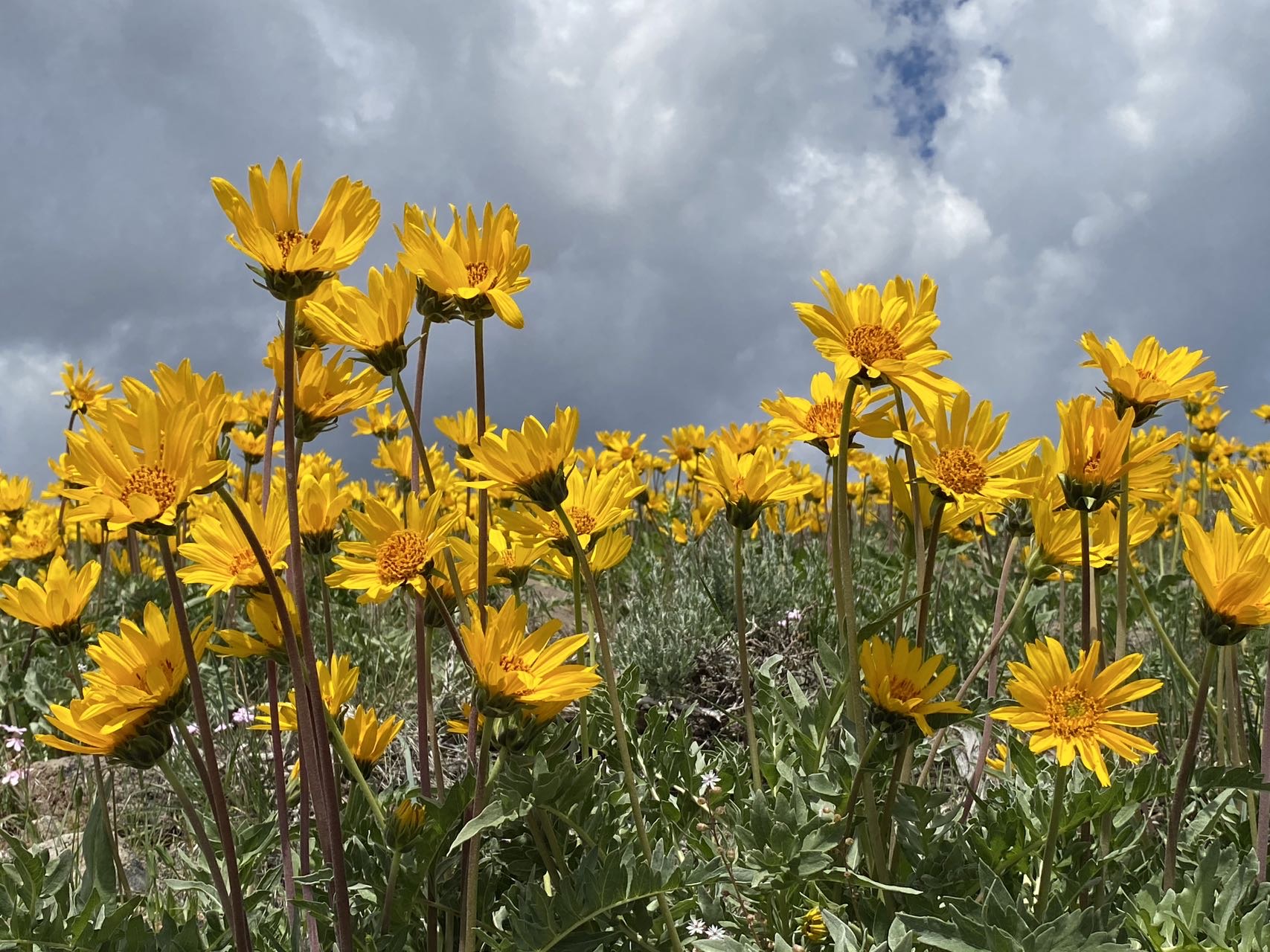Beige.

Beige is the color of my home. The houses are beige, the landscape is beige, and even the atmosphere can feel just a tad bit beige. It’s not a bad thing, per se, to be beige. I have nothing against the color. I’m sure some people absolutely adore the color, but it’s…
It’s just so awfully, utterly, boring.
Yellow.

Yellow is the color of the hilltop near our house, glistening gold in the sunlight, like oddly discolored plaster or mold on a rock. Yellow is the color of the field of wild chrysanthemums we found when my family and I climbed through bare expanses of rocks and sagebrush to sate our curiosity about that strangely golden mountaintop, trampling through the nests of who knows how many wild animals, snakes and lizards and unfriendly insects. So perhaps it’s the color of reckless inquisitiveness, the color of the cat that died of curiosity.
But butterflies and bees flit through stems and dance through the petals, and the field of beautiful, shining, golden flowers stands like an oasis in our beige, beige desert, so maybe it’s the color of hope and beauty in unexpected places.
But I really know yellow as the color of the car that drove past in sixth grade when a girl punched my shoulder and told me it was a tradition to punch someone nearby whenever a yellow car drove by. The color that, for many years following that day, always preceded an “Ow!” from my brother: I saved all the yellow cars I saw for him. The color that I still jerk to attention on seeing when I see it on four wheels, even though he’s old and off at college, far from any and all (affectionate) punches I might bestow upon him. So maybe yellow is the color of nostalgia, instead.
Or, speaking of cars, the color of traffic lights, of uncertainty: do I go or do I stop?
But then again, yellow is really just a pale sort of beige (pale like moonlight, like snow, like ghosts under the streetlights’ glow), or maybe a beige without red (roses, anger, yet more traffic lights), or, well. Some form of beige, anyway, depending on the shade. So if beige is awful and boring and so very desert, what makes the field of yellow so very different?
Color symbolism is so odd. We’re taught in English class the symbolism of every color in the rainbow—blue is calm, sad; purple is royalty; green is poison, nature. And it matters, oh so much, because that blue curtain mentioned in a throwaway comment on page 142 is the tipping point in the main character’s entire arc. And I mean, sure, go figure, if that makes you feel better, then I’m sure it coult mean that.
But I just think that overthinking colors and meaning is just a bit pointless. Perhaps we should just, you know. Not overthink. Enjoy the field of yellow without wondering what makes yellow so superior to beige. Live life without constantly needing to justify it all, to find something deeper. Maybe there is something deeper, maybe there isn’t. Do we always need to know, if there is?
(Except that, too, is something of a flawed viewpoint: if we hadn’t wondered if there was something behind the gold-tipped hill, we would never have found the field in the first place. So who knows?)
